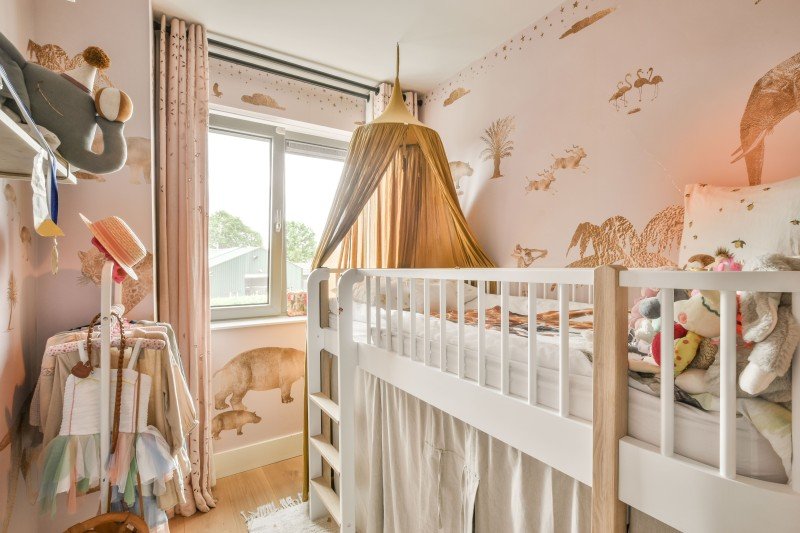
kids_bunk_beds1806
About kids_bunk_beds1806
Here’s A Few Facts Concerning Bunk Beds Sale
Bunk Beds Sale: A Comprehensive Guide to Choosing the Right Bunk Bed for Your Home
Bunk beds have actually long been a staple in kids’s bed rooms, providing a combination of space-saving effectiveness and fun. Whether accommodating brother or sisters, buddies on slumber parties, or just taking full advantage of a playroom, bunk beds have ended up being an essential element in contemporary family homes. As sales on bunk beds rise, it becomes progressively essential for customers to make informed choices when buying one. This short article will cover the essentials of buying a bunk bed, from types to safety features, in addition to pointers for keeping the integrity of your financial investment.
Types of Bunk Beds
When thinking about a bunk bed sale, it’s important to comprehend the different designs readily available on the marketplace. Below are the most common types:

Traditional Bunk Beds: These consist of two beds stacked one above the other, sharing a single frame. They are typically the most affordable option.
L-Shaped Bunk Beds: This design includes one bed placed vertically and another horizontally. This plan develops additional space beneath the upper bed, which can be utilized for storage or a play area.
Lofted Beds: Similar to conventional bunk beds but without any lower bed. Rather, the space underneath can be utilized for a desk, play area, or extra storage.
Triple Bunk Beds: For families with a bigger number of kids or frequent slumber parties, triple bunk beds offer 3 sleeping locations in a space-efficient design.
Futon Bunk Beds: These designs merge bunk beds and futon couches. The bottom area transforms into a separate seating area, boosting functionality.
Convertible Bunk Beds: These beds can be separated into 2 specific beds, making them versatile as children’s needs change gradually.
Table 1: Comparison of Bunk Bed Types
| Type | Description | Space Efficiency | Additional Features |
|---|---|---|---|
| Conventional Bunk Bed | Two beds stacked vertically | High | Simplest style |
| L-Shaped Bunk Bed | One vertical and one horizontal bed | Moderate | Play or storage space |
| Lofted Bed | Elevated bed with open space below | High | Work/play location |
| Triple Bunk Bed | 3 stacked beds | Extremely High | Accommodates more users |
| Futon Bunk Bed | Bunk bed with a convertible futon | High | Multi-functional |
| Convertible Bunk Bed | Can be divided into 2 different beds | Moderate | Flexibility & & durability |
Security Features to Consider
Security is vital when investing in a bunk bed. Below are crucial safety functions to look for:
Guardrails: Adequate guardrails should be present on both sides of the upper bunk to avoid falls. They should be at least 5 inches higher than the mattress.
Ladder Design: Look for tough, wide ladders with slip-resistant rungs. Ensure that the angle is not too high for simple gain access to.
Stability: Ensure the bed is constructed with strong materials, such as solid wood or heavy-duty metal. The bed should not wobble when in use.
Weight Limit: Check the weight capacity of the bunk bed to guarantee it can accommodate the intended users safely.
Product Safety: If possible, select beds made from non-toxic products or those fulfilling security requirements for kids’s furniture.
Table 2: Essential Safety Features
| Feature | Description | Importance |
|---|---|---|
| Guardrails | Sides of upper bed to prevent falls | Necessary for kid safety |
| Ladder Design | Solid, slip-resistant rungs | Aids safe and simple access |
| Stability | Develop quality to avoid wobbling | Guarantees safety and longevity |
| Weight Limit | Optimum weight capability | Prevents accidents |
| Material Safety | Non-toxic, safe products | Secures children’s health |
Upkeep Tips for Bunk Beds
To extend the life of your bunk bed and guarantee continuous safety, think about the following upkeep suggestions:
Regular Inspections: Periodically inspect the structure for loose screws, bolts, or any indications of wear. Tighten up fasteners as needed.
Tidy Periodically: Dust and clean the surfaces regularly. Use suitable cleaners that won’t damage the finish.
Examine Weight Limits: Be mindful of weight limits, especially with older kids or adults who might want to use the upper bunk.
Avoid Climbing on Guardrails: Educate children not to utilize guardrails for climbing or playing to minimize the danger of accidents.
Frequently Asked Questions (FAQs)
Q1: What is the age limitation for kids to securely utilize bunk beds?A: While it varies by the manufacturer, numerous advise that kids under 6 need to not sleep in the upper bunk due to security concerns.
Q2: How can parents discourage unsafe climbing?A: Setting clear rules about bunk bed usage and supervising children can help. Furthermore, using a bed tent can dissuade climbing while creating a fun sleep environment.
Q3: What should I consider when embellishing a room with bunk beds?A: Ensure there is enough space around the bunk bed for safe motion, and utilize the decor to develop individualized areas for each child.
Q4: Is a lofted bed ideal for older children?A: Yes, lofted beds can be suitable for older kids as long as they meet security requirements and the child is accountable enough to utilize them securely.
Bunk beds serve a practical function while adding an element of fun to a kid’s bedroom. As sales of bunk beds continue to rise, mindful consideration of types, safety functions, and upkeep practices is important for parents and caretakers. By understanding these essential aspects, households can discover the perfect bunk bed for their home, ensuring both functionality and safety for many years to come. Whether it’s for siblings sharing a space or developing a comfortable pajama party space, a well-chosen bunk bed can offer joy and usefulness, making it a worthwhile investment.

No listing found.
